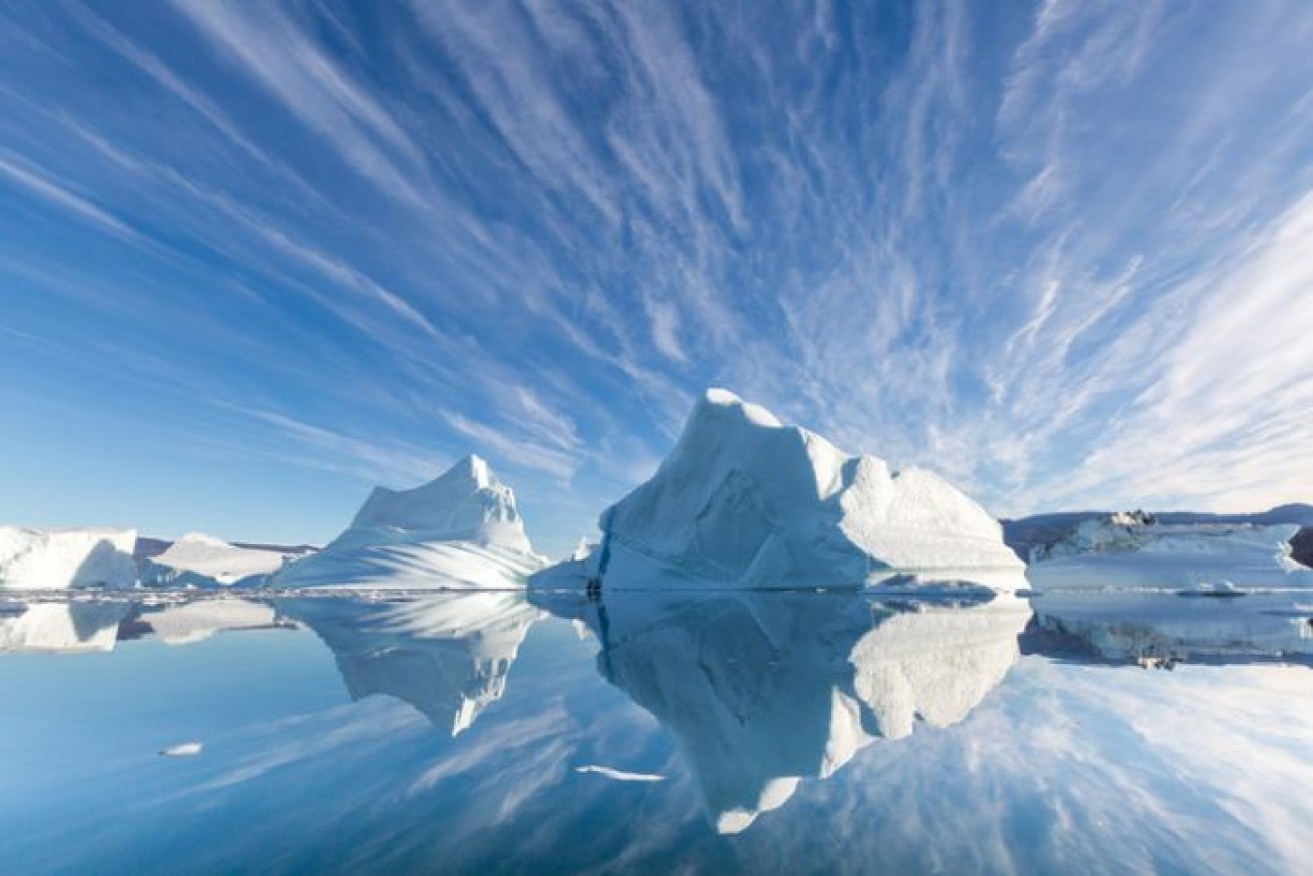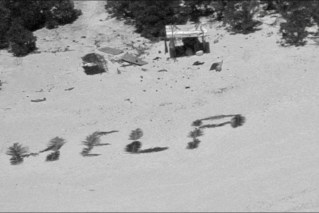Not all icebergs are white: Here’s what makes them blue, green or striped

A classic white iceberg in Greenland. Photo: Getty
Icebergs can be beautiful and majestic – but have you ever wondered what gives them their colour?
Most of us think of icebergs as white, but they actually come in a range of shades between bright blue and dark green. Some are even striped.
“Most icebergs are white – with a hint of blue,” University of Washington professor Steve Warren, who studies how sunlight interacts with ice, said.
This is because they are made of snow and “glacier ice”, which is compressed snow.
While a small amount of light reflects from the surface of an iceberg, most of it enters the iceberg and interacts with snow particles and bubbles of air trapped in the glacier ice.
As the light hits snow particles or bubbles, it hits a boundary between ice and air and is bent and scattered.

Blue glacier ice in Alaska. Photo: Getty
Where there are a lot of bubbles and snow particles in the iceberg, all wavelengths of light are scattered before they get absorbed, and so we see a bright white colour.
The fewer bubbles there are, the less chance there is of light being scattered.
In ice, this results in red wavelengths being absorbed, with only blue light being scattered and escaping the iceberg. This means we see a blue colour.
Mysterious green icebergs
Antarctica is home to some of the most enigmatic icebergs of all time – like dark icebergs the colour of jade or emerald green, which have puzzled ship captains for the best part of a century.
“They are so immediately obvious when you are just looking at them because they are dark and clear,” said Professor Warren, who has been on two Antarctic expeditions to study icebergs.
These icebergs are clear because, unlike glacier ice, they don’t contain any bubbles. Instead, they are made of frozen seawater, which freezes to the underside of the ice shelf floating above it.

A jade-coloured iceberg near Mawson Base, Australian Antarctic Territory. Photo: Getty
This “marine ice” can actually come in various shades from green to blue, depending on what it contains.
Nature’s palette for these icebergs comes from the sea, and from the movement of the ice sheet across the Antarctic continent.
As an ice sheet passes towards the sea, it grinds the Antarctic bedrock creating a red iron-rich dust called “glacial rock flour”, which falls into the ocean.
Seawater also contains dissolved yellow organic matter from dead plankton cells. Together with the red iron particles, these cause a shift in the colour of light scattered by the iceberg.
Longer wavelengths are favoured, so we see darker and greener colours.
“The exact colour of these marine icebergs will depend on how much organic matter and iron oxide was in the seawater at the time,” Professor Warren said, adding that the number of cracks in the iceberg also play a role.
Striped icebergs
Last but not least, there are striped icebergs, which are also unique to Antarctica.
These are created by the intrusion of seawater into vertical cracks, which occur in the ice shelf as it breaks away from land.
As seawater floods up to fill cracks in the cold, light-coloured glacier ice, it freezes into a dark stripe.
Professor Warren said icebergs are not only beautiful, but can help scientific research.

An iceberg showing dark stripes of marine ice and stripes of blue and white glacier ice and snow. Photo: Getty
Studying icebergs can help shed light on processes that occur at the base of ice shelves – how quickly cracks in them can open up, for example.
It can also help us to understand how nutrients, such as iron, are distributed in the Southern Ocean.
“Ideally, it would be nice to be able to know, just from the colour of an iceberg, what’s in the ice – and how important it is to contributing nutrients to the Southern Ocean,” Professor Warren said.
He hopes to carry out such research in the future, along with researchers based in Australia.
“We never would have proposed to study icebergs previously,” he said.








